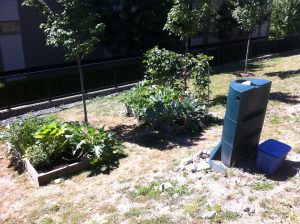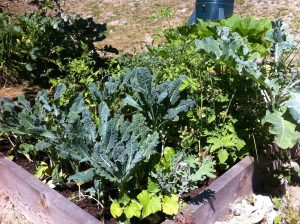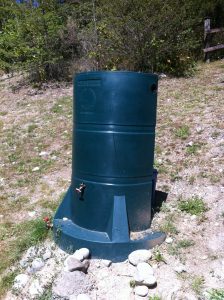Strata garden plot
There she was. A lovely mother of two busily tending to her community garden plots. It was a sunny morning and the plants were in need of water. The two plots are small but her strata council has approved the construction of one more plot. It wasn’t easy, nor quick, but there will be more space for growing stuff. Not every strata council is this accommodating. Most condo patios are either too small or don’t receive enough sunlight for serious growing.
There is a water barrel for watering. All members take turns watering and taking care of the plots. The harvest is shared among them. Community.
Globe article
Soon after meeting this lady, I opened up my Globe and Mail newspaper. I was immediately grabbed by Ian Clarke’s article “The future is inefficient, and it tastes just fine” (The Globe and Mail, Wednesday August 10, 2016)
It is clear that there is more and more interest in these gardens. A mother of two is happy to know that her vegetables are organic, she can save a bit of cash and use the plot to teach her kids about food. This is nothing new. Michelle Obama famously planted a kitchen garden at the White House to promote the value of urban agriculture.
Several years ago I had a community garden plot in the Burquitlam area of Coquitlam. Busy at the time and annoyed with one of the garden directors, I gave up. Now I wish I hadn’t.
As The Globe article mentions, during the world wars, the government encouraged people to plant food gardens in all available urban spaces.
Urban agriculture
From tiny backyard plots, community and school gardens to larger commercial farms, the urban agriculture sector is expanding. It will never replace rural farms. But check out the benefits. It can:
- reduce the carbon footprint of our food
- create resilient cities and food systems
- reduce the urban heat island and air-conditioning costs
- reduce demands on city infrastructure
- create jobs
Urban agriculture is:
- smaller in scale
- usually more biodiverse
- responds to local tastes and demands
- technically inefficient as it uses local workers who make more cash
- it is very efficient at producing good food and jobs
I can’t wait to see how the third garden plot develops.








